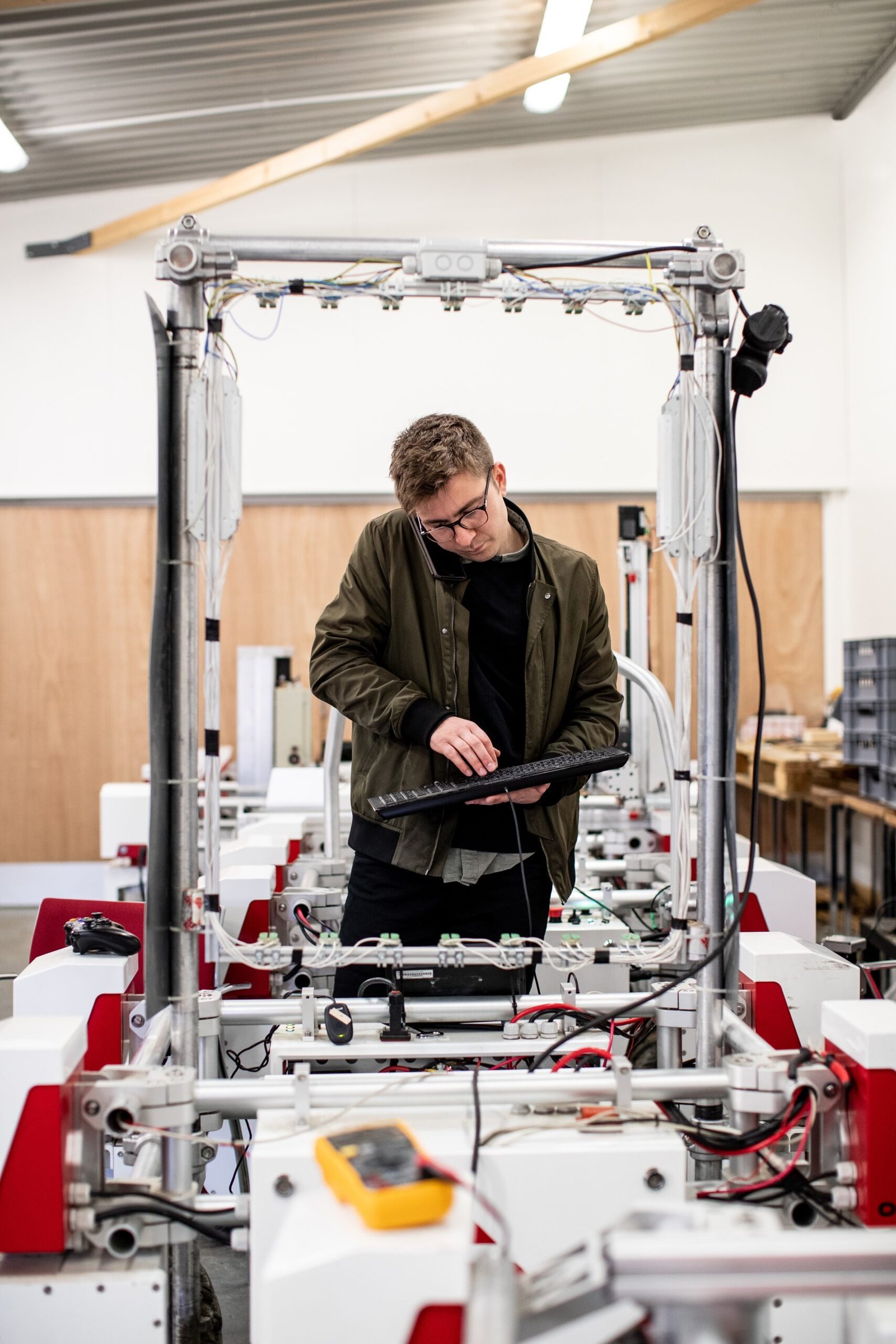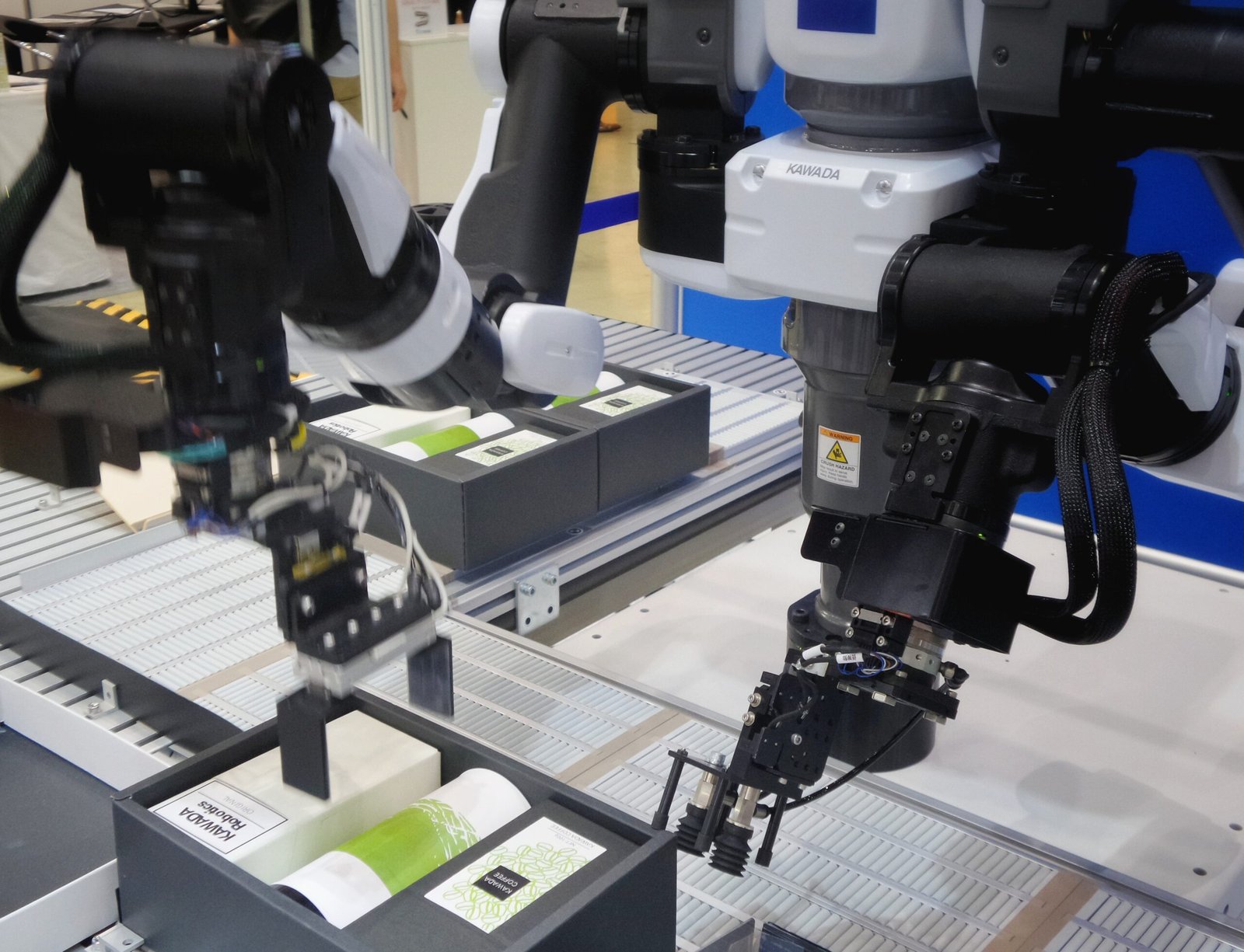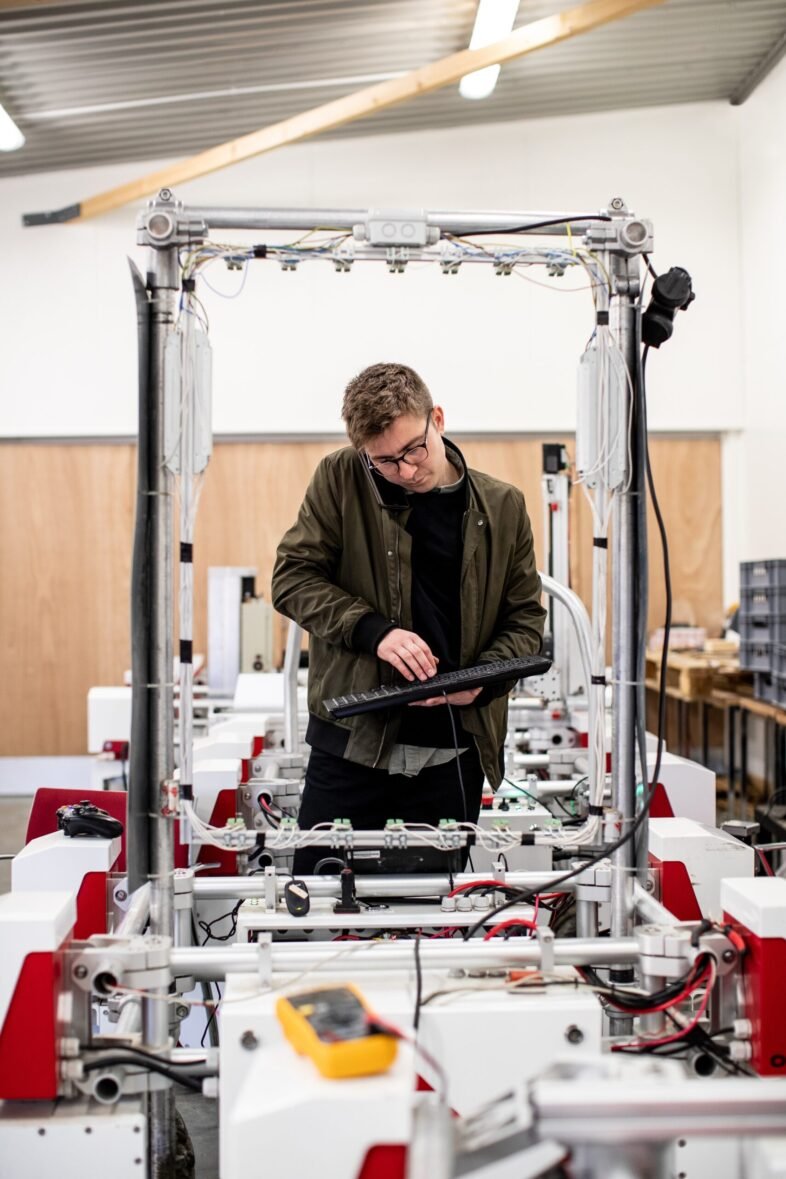In today’s rapidly advancing technological era, the question of whether wireless video monitors are suitable for use in high-risk environments, such as factories, remains a pressing concern. With safety being the utmost priority, it is crucial to evaluate the effectiveness and reliability of wireless video monitoring systems in withstanding the challenges posed by such hazardous environments. This article aims to explore the practicality and potential benefits of utilizing wireless video monitors in factories, taking into account factors such as reliability, durability, and overall safety. By examining the advantages and limitations of these modern surveillance solutions, we can gain a better understanding of their viability in high-risk settings. Yes, they are! In fact, using wireless video monitors in high-risk environments can offer numerous benefits that enhance safety, security, and overall efficiency. Let’s take a closer look at the advantages of using wireless video monitors in these settings.

This image is property of images.unsplash.com.
Benefits of Wireless Video Monitors in High-Risk Environments
Enhanced Safety and Security
One of the primary benefits of using wireless video monitors in high-risk environments is the enhanced safety and security they provide. These monitors allow for real-time monitoring of critical areas, enabling immediate response to any potential safety or security threats. By having a constant visual presence and the ability to provide live updates, wireless video monitors can help prevent accidents, identify hazards, and deter potential intruders.
Flexibility and Mobility
Wireless video monitors offer flexibility and mobility, allowing for easy installation and repositioning whenever necessary. Unlike traditional wired surveillance systems, wireless monitors eliminate the need for complicated wiring and are not limited by physical infrastructure. This flexibility enables businesses to quickly adapt their surveillance strategies to changing needs and priorities in high-risk environments.
Cost-effectiveness
Another advantage of wireless video monitors in high-risk environments is their cost-effectiveness. Compared to traditional wired systems, wireless monitors require less equipment and incur lower installation costs. Additionally, wireless technology eliminates the need for costly maintenance and repairs associated with wired systems. The ease of installation and the reduced equipment requirements make wireless video monitors a more economical choice for businesses operating in high-risk environments.
Ease of Installation and Setup
Installing and setting up wireless video monitors is a straightforward process. With wireless technology, there is no need to lay cables or risk disrupting critical operations in high-risk environments. Wireless video monitors can be quickly installed in optimal locations and set up to deliver real-time video feeds to designated control centers or mobile devices. This ease of installation and setup ensures that businesses can rapidly implement a comprehensive surveillance system without causing unnecessary disruptions or delays.
Challenges of Using Wireless Video Monitors in High-Risk Environments
While wireless video monitors offer numerous advantages, they also come with certain challenges that need to be considered when implementing them in high-risk environments. It’s important to be aware of these challenges to ensure a seamless and effective surveillance system.
Interference and Signal Strength
One of the main challenges of using wireless video monitors in high-risk environments is the potential for interference and signal strength issues. Factors such as physical barriers, distance, and other electronic devices operating in the vicinity can affect the quality and reliability of wireless signals. To mitigate this challenge, it is crucial to evaluate the signal strength requirements specific to the environment and select wireless video monitors that are designed to overcome interference and ensure consistent signal transmission.
Cybersecurity Risks
Wireless technology exposes surveillance systems to potential cybersecurity risks. Without proper security measures in place, wireless video monitors can be vulnerable to unauthorized access, hacking, and data breaches. To address these risks, it is essential to implement robust encryption protocols, regularly update firmware and software, and ensure secure authentication practices. By taking these cybersecurity measures, businesses can minimize the chances of compromising sensitive data and ensure the integrity of their surveillance systems.
Limited Battery Life
Wireless video monitors rely on battery power, which can pose a challenge in high-risk environments that require continuous monitoring. Depending on the usage and settings, battery life can vary significantly. It is crucial to choose wireless monitors with long-lasting batteries or the ability to connect to a power source. Additionally, having a system in place to monitor battery levels and manage recharging or battery replacement is important to ensure uninterrupted monitoring in high-risk environments.
Compatibility Issues
Compatibility issues can arise when integrating wireless video monitors into existing surveillance systems or infrastructure. In high-risk environments, where multiple monitoring systems may be in place, it is crucial to ensure that the wireless monitors can seamlessly integrate with other devices, software, or control centers. Conducting thorough compatibility testing before implementation can help identify and resolve any issues, ensuring a smooth integration and an efficient surveillance system.
Selecting the Right Wireless Video Monitor for High-Risk Environments
To fully leverage the benefits of wireless video monitors in high-risk environments, it is important to carefully select the right equipment. Here are some key factors to consider when choosing wireless video monitors for such settings:
Consideration of Environmental Factors
High-risk environments can present unique environmental challenges such as extreme temperatures, humidity, dust, and vibration. It is essential to choose wireless video monitors that are specifically designed to withstand these conditions. Look for monitors with rugged exteriors, weatherproof ratings, and built-in protection against environmental elements to ensure reliability in demanding environments.
Reliability and Durability
Given the critical nature of surveillance in high-risk environments, reliability and durability are crucial factors to consider when selecting wireless video monitors. Look for monitors that have a proven track record of performance in similar environments. Consider factors such as warranty, manufacturer reputation, and testimonials from other users to ensure the chosen monitors can withstand the demands of continuous monitoring while maintaining excellent video quality.
Signal Strength and Range
The signal strength and range of wireless video monitors are critical considerations in high-risk environments with large areas to monitor. Assess the size of the area that needs coverage and choose monitors that offer sufficient signal strength and range to transmit video feeds without degradation or interruptions. Antennas, signal boosters, or mesh network setups can be used to extend the range and improve signal strength if necessary.
Encryption and Data Security
Protecting the integrity and confidentiality of surveillance data is of utmost importance in high-risk environments. Look for wireless video monitors that offer robust encryption protocols to ensure secure transmission of video feeds. Features such as encrypted storage options and authentication mechanisms add an extra layer of security to prevent unauthorized access to sensitive information. It is advisable to consult with cybersecurity experts to determine the best encryption practices and standards for your specific high-risk environment.
Best Practices for Using Wireless Video Monitors in High-Risk Environments
Implementing wireless video monitors in high-risk environments requires careful planning and adherence to best practices. Consider the following practices to ensure a successful and effective surveillance system:
Regular Maintenance and Testing
Routine maintenance and testing are essential to ensure that wireless video monitors are functioning optimally. Regularly inspect equipment for any physical damage, clean lenses and cameras, update firmware, and perform routine checks on battery life and signal strength. Additionally, conduct periodic tests to verify the system’s effectiveness, including video quality, transmission range, and compatibility with other devices or software.
Securing Access Points
To minimize the risk of unauthorized access to wireless video monitors, it is crucial to secure access points. Change default usernames and passwords, restrict access to authorized personnel, implement strong authentication protocols, and regularly update firmware and software for enhanced security. By implementing these measures, businesses can protect their surveillance systems from potential cybersecurity threats.
Monitoring Signal Strength
Continuous monitoring of signal strength is essential to ensure uninterrupted video feeds in high-risk environments. Regularly check the signal strength of wireless monitors to identify any potential issues and take appropriate corrective action. Signal boosters, relocating access points, or adjusting antennas can be necessary to maintain optimal performance in challenging environments.
Implementing Redundancy Measures
High-risk environments demand reliable and uninterrupted surveillance. To mitigate the risks of system failures or signal interruptions, it is beneficial to implement redundancy measures. This can include having backup power sources, redundant access points, or dual-streaming capabilities. By incorporating redundancy measures, businesses can ensure continuous monitoring and minimize situations where critical areas are left unmonitored due to technical failures.

This image is property of images.unsplash.com.
Regulatory Compliance in High-Risk Environments
When implementing wireless video monitors in high-risk environments, it is crucial to consider and comply with applicable regulatory requirements. Key aspects of regulatory compliance include:
Understanding Legal Requirements
Different industries and regions may have specific legal requirements related to video surveillance in high-risk environments. Familiarize yourself with these legal requirements, such as consent requirements, privacy laws, and restrictions on video monitoring in certain areas. Ensure that your wireless video monitoring system complies with all relevant laws to avoid legal penalties or unauthorized use of surveillance data.
Meeting Occupational Safety Standards
In high-risk environments, compliance with occupational safety standards is essential. Ensure that your wireless video monitors meet the necessary safety certifications and adhere to industry-specific safety guidelines. By keeping safety standards in mind during the selection and installation process, you can help create a safer work environment while meeting regulatory requirements.
Maintaining Data Privacy and Confidentiality
Maintaining data privacy and confidentiality is crucial when using wireless video monitors in high-risk environments. Implement strict access controls, follow encryption best practices, and have data protection policies in place to safeguard sensitive information and prevent unauthorized access or disclosure. Regularly review and update these measures to align with evolving privacy regulations and industry standards.
Case Studies: Successful Implementation of Wireless Video Monitors in Factories
Wireless video monitors have been successfully implemented in various factories and manufacturing facilities, resulting in improved safety, security, and operational efficiency. Let’s take a look at some notable case studies:
ABC Manufacturing: Enhancing Safety and Efficiency
ABC Manufacturing, a leading automotive parts manufacturer, implemented wireless video monitors in their assembly lines and critical areas of their factories. By leveraging the flexibility of wireless technology, ABC Manufacturing successfully enhanced safety and efficiency. Real-time monitoring allowed them to quickly detect safety hazards, monitor employee compliance with safety protocols, and identify production bottlenecks. The wireless video monitors also enabled remote access, allowing managers to monitor operations and make informed decisions regardless of their location.
XYZ Inc.: Streamlining Operations and Surveillance
XYZ Inc., a global electronics manufacturer, utilized wireless video monitors to streamline their operations and surveillance efforts. By strategically installing wireless monitors in their high-risk areas, XYZ Inc. was able to monitor production processes, prevent unauthorized access, and quickly respond to equipment malfunctions. The flexibility of wireless monitors allowed them to adapt their surveillance strategies as production demands evolved, resulting in streamlined operations and increased productivity.
123 Industries: Improving Incident Response Time
123 Industries, a heavy machinery manufacturer, implemented wireless video monitors to improve incident response time in their high-risk environment. By installing wireless monitors in areas prone to accidents or equipment failures, 123 Industries achieved real-time visibility into critical incidents. Prompt response to incidents facilitated by wireless video monitors helped minimize damage, prevent prolonged production downtime, and improve overall safety outcomes.

This image is property of images.unsplash.com.
Conclusion
Wireless video monitors have proven to be highly beneficial in high-risk environments such as factories. They offer enhanced safety and security, flexibility and mobility, cost-effectiveness, and ease of installation and setup. Although challenges such as interference and signal strength, cybersecurity risks, limited battery life, and compatibility issues exist, these can be mitigated through careful selection, best practices, and regulatory compliance. By understanding the unique requirements of high-risk environments, businesses can successfully implement wireless video monitors and experience improved safety, efficiency, and overall operational excellence.

Meet Penny Sterling, the editor behind the captivating content of our blog, “Wireless Video Monitor.” With a background in electrical engineering and a deep passion for technology, Penny has become a leading authority in the world of wireless video monitors. Her ability to distill complex concepts into accessible articles has made her a trusted guide for both tech enthusiasts and newcomers to the field. Penny’s unwavering commitment to research and staying up-to-date ensures that “Wireless Video Monitor” remains an authoritative source for reliable information. Get ready to embark on a journey of wireless video monitor exploration with Penny Sterling as your knowledgeable and dedicated mentor.


